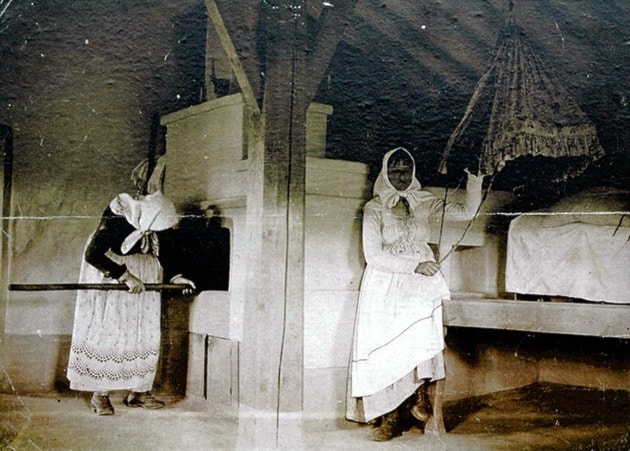by Jennifer Houghton
Mmmmmm, I love the smell of fresh baked bread right out of a brick oven. In Grand Forks we get to experience the smell and taste of a not-yet-lost art by the linking of the 101-year-old flour mill with the Doukhobor-style bake oven now being used at the Boundary Museum.
The Pride of the Valley flour mill still operates and produces additive-free flour through the efforts of the Grand Forks Doukhobor Milling Heritage Society. Now a tourist attraction that sells flours locally, it was originally used by pioneers to produce food for their families.
Walter Hoodikoff, one of the directors of the milling society, is the third generation of five to live in Grand Forks.
Walter’s grandfather helped Doukhobor pacifists escape exile in Siberia. As a result of his espionage and in order for his family to leave Russia safely, he had to grow a beard and temporarily change the spelling of his name by a few letters. It was that “stroke of a pen” that enables Walter and his own grandchildren to be here today.
Bread is a symbol of Doukhobor ideals of toil, peace and love. In the late 1800s, Doukhobors were told by their leaders to become as pure as possible to prepare for the long trek to Canada. They were told to stop eating meat, stop drinking alcohol, and stop smoking. The tradition of eating pure, wholesome, chemical-free food continues through the current milling practices. Nothing synthetic or animal-derived is added to the flours and as much organic grain as possible still comes from local sources like Creston.
In the old days, farmers would bring sacks of grain on wagons and drive away with flour for their families. Lifestyles have changed over the generations but even during Walter’s childhood here, everyone had their own cow or goat. It was part of the routine for children to milk the cows and churn the butter. Walter’s wife now bakes her own bread with the mill’s flour.
Although it is no longer used, an antique bread oven still stands at the mill. It served a dual purpose when it was formerly housed inside a building. Ladies and children would set up mattresses to sleep on top and stay toasty warm on cold winter nights.
The bread oven currently being fired at the Boundary Museum is identical to the one at the mill. On Thursdays, during the summer, bread is baked in the oven by volunteers (who sometimes use secret recipes) and served with homemade jam and butter.
Occasionally a local Doukhobor elder throws her own loaves in the oven. Some days you may even find our 2016 Fall Fair Dignitary, Laura Lodder, churning the butter.
Firing up the oven is an involved and detailed process. It begins the afternoon before, preparing the metal frames and the spark boxes. The wood must be dry larch or fir, cut precisely into 12-inch lengths, then stacked cross-wise. The oven is lit at 7 a.m. to reach the correct temperature for the 11 a.m. bake time. Wood must be constantly adjusted and readjusted to ensure the temperature is between 375 – 500 degrees when the 12 loaves are put in.
You can get a taste of authentic Pride of the Valley bread this season at the Harvest Festival at the Boundary Museum on Sept. 24.
